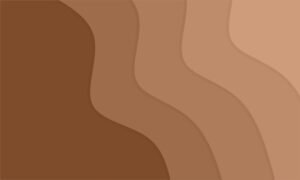Shades of Green: The Ultimate Guide to Every Hue

Shades of Green
The diversity of shades of green hex colors offers a fascinating exploration of nature’s favorite hue. Representing growth, freshness, harmony, and renewal, green’s range captivates the human eye, symbolizing a blend of calm and vibrancy. Whether in digital design, branding, interior decoration, or fashion, knowing how to wield green hues effectively opens endless creative possibilities. This article dives deep into understanding the hex colors of different green shades, their unique characteristics, and how to use them for maximum visual impact.
Understanding Hex Color Codes
Hex color codes are six-character strings beginning with a “#” symbol that represent specific colors in the RGB (Red, Green, Blue) color space. Each two-character segment indicates the intensity of red, green, and blue, respectively. For instance, pure green is represented by the hex code #00FF00, signifying a full green channel with no red or blue.
Popular Shades of Green Hex Colors
Forest Green (#228B22)
Forest Green reflects the dense hues found in a woodland setting. This darker green shade embodies resilience, stability, and connection to the Earth. Designers often use it to convey trust and dependability in branding, particularly for environmental organizations.
Lime Green (#32CD32)
Bright and vibrant, Lime Green embodies energy, youthfulness, and zest. This eye-catching hue works well for emphasis in web design, drawing attention without overwhelming the user. Its lively presence makes it suitable for brands emphasizing creativity and fun.
Olive Green (#808000)
Often associated with peace and wisdom, Olive Green represents sophistication. With a subdued earthy tone, it exudes a calming influence, making it perfect for luxury brands, military themes, or more traditional interior décor applications.
Why Shades of Green Hex Colors Matter in Design
The psychological impact of colors cannot be overstated, and green, in particular, plays a significant role in evoking emotions of relaxation, renewal, and health. From soothing pastels like Mint Green (#98FB98) to the rich depth of Emerald (#50C878), green’s vast palette offers infinite possibilities for creative expression. Moreover, hex codes provide precise replication of green shades, ensuring visual consistency in designs.
Design Applications of Shades of Green Hex Colors
- Web and Graphic Design: Use hex codes like #7FFF00 (Chartreuse) to create striking buttons or calls-to-action that demand user engagement.
- Branding and Marketing: Natural, soft greens like Seafoam (#71EEB3) can emphasize eco-friendly products, while bold greens such as Kelly Green (#4CBB17) make logos stand out.
- Interior Design: Green walls painted in Sage (#BCB88A) create a peaceful atmosphere, while accents in Apple Green (#8DB600) energize living spaces.
Color Combinations and Green Pairings
Combining shades of green with complementary or contrasting colors enhances aesthetic appeal and conveys specific messages. For example:
- Green and Blue (#0000FF): This combination reflects calm and serenity, often seen in wellness branding.
- Green and Pink (#FFC0CB): A trendy, youthful pairing ideal for modern and playful designs.
- Green and Gold (#FFD700): Symbolizing luxury and success, this pairing works well in upscale branding.
Exploring Unique Green Shades and Their Hex Codes
Mint Green (#98FF98)
Mint Green’s fresh, soft hue makes it highly versatile. Its hex code reflects a balanced mix of green and blue, symbolizing tranquility and renewal. Ideal for spas, wellness brands, or minimalist home décor.
Emerald Green (#50C878)
Emerald is timeless, and associated with opulence and growth. This rich jewel-tone green frequently appears in jewelry design and luxury branding. Its hex color speaks of elegance and class.
Neon Green (#39FF14)
High-visibility and futuristic, Neon Green demands attention. Its bold hex color makes it ideal for gaming, streetwear, and tech branding, instantly creating an energetic and modern impression.
Jade Green (#00A86B)
Jade represents wisdom and serenity, often found in traditional and cultural designs. Its blend of green and a hint of blue makes it a sophisticated choice for jewelry, fashion, and interior accents.
Nature-Inspired Shades of Green Hex Colors
Many green hues mimic the vibrancy found in natural settings:
- Grass Green (#7CFC00): Bright and cheerful, reminiscent of spring.
- Moss Green (#8A9A5B): Subdued, earthy tones create a grounding presence.
- Pine Green (#01796F): Deep, evergreen shade associated with winter foliage.
These hues bring nature indoors, promoting wellness and a connection to the Earth.
How to Incorporate Shades of Green in Design
Digital User Interfaces
Green is associated with success, security, and environmental consciousness. By incorporating shades of green hex colors in interface elements like buttons (#7FFF00) and backgrounds (#556B2F), designers create a user-friendly experience. Lighter greens increase readability and comfort during prolonged use.
Fashion and Textiles
Fashion designers leverage green to make statements. Soft green hues appear frequently in spring collections, while deep greens serve as classic staples. Hex codes like #ADFF2F (Green Yellow) create vibrant textiles, drawing consumer attention.
Green Shades in Branding
- Health and Wellness: Soft greens like Tea Green (#D0F0C0) resonate with health and rejuvenation.
- Eco-Friendly Brands: Earthy tones such as Fern Green (#4F7942) emphasize sustainability.
- Corporate Identity: Reliable greens like Hunter Green (#355E3B) convey professionalism.
Shades of Green Hex Colors in Cultural Contexts
Different cultures assign unique meanings to green shades. In some Eastern traditions, green represents life and fertility, while Western cultures often associate it with prosperity. Understanding these associations helps designers craft culturally relevant visuals.
Practical Tips for Using Shades of Green Hex Colors
- Contrast Matters: Ensure text visibility when placing green elements on a website.
- Pair with Neutrals: Soft greens shine when complemented by neutrals like white, beige, or grey.
- Consistent Hex Codes: Maintain color accuracy by using precise hex codes across different media.
Tools for Choosing the Right Shades of Green
Numerous digital tools simplify the process of choosing the best green shades:
- Adobe Color Wheel: Generate harmonious color schemes.
- Canva Color Palette Generator: Upload an image to extract complementary green hues.
- Coolors: Browse pre-made palettes featuring green shades for inspiration.
Testing Green Hex Colors for Accessibility
Ensuring accessibility in design is essential. High contrast ratios for text over green backgrounds improve readability for users with visual impairments. Tools like the Web Content Accessibility Guidelines (WCAG) assist in evaluating color contrast and accessibility.
FAQs
What are hex colors used for?
Hex colors define colors in digital design through a six-character code representing red, green, and blue values.
Which green shade works best for eco-friendly branding?
Soft, earthy greens like Fern Green (#4F7942) convey sustainability and nature.
What is the significance of using green in UI design?
Green evokes trust, success, and a calming effect, enhancing user interaction and comfort.
How can I find complementary shades to green hex colors?
Tools like Adobe Color Wheel and Coolors offer suggestions for harmonious color pairings.
What is the meaning behind Emerald Green?
Emerald Green (#50C878) symbolizes luxury, growth, and refinement, often associated with elegance.
How to ensure green text is readable on websites?
Ensure sufficient contrast between the green text and background colors, adhering to accessibility guidelines.
What shade of green is most popular in interior design?
Sage Green (#BCB88A) offers a soothing, timeless hue often used in modern home décor.







